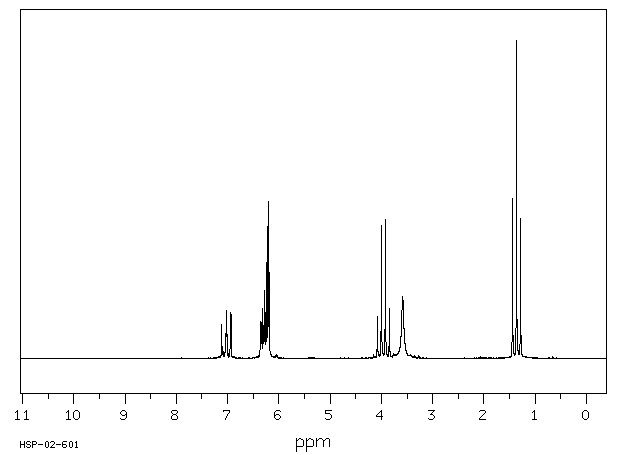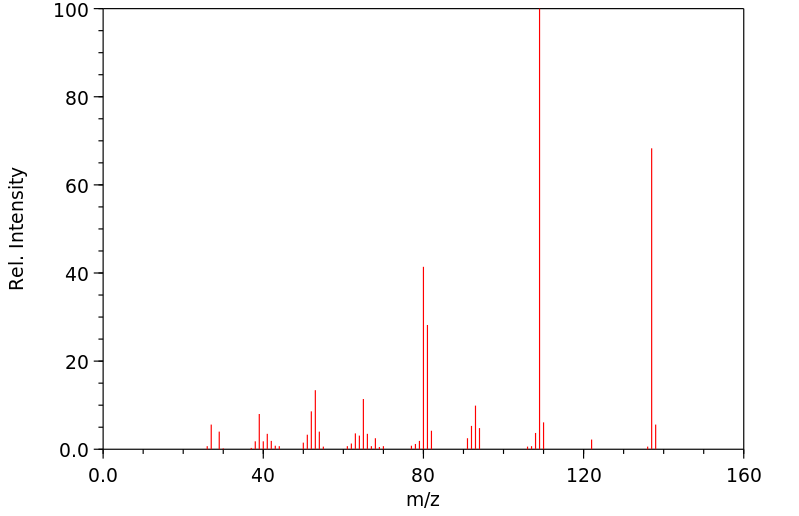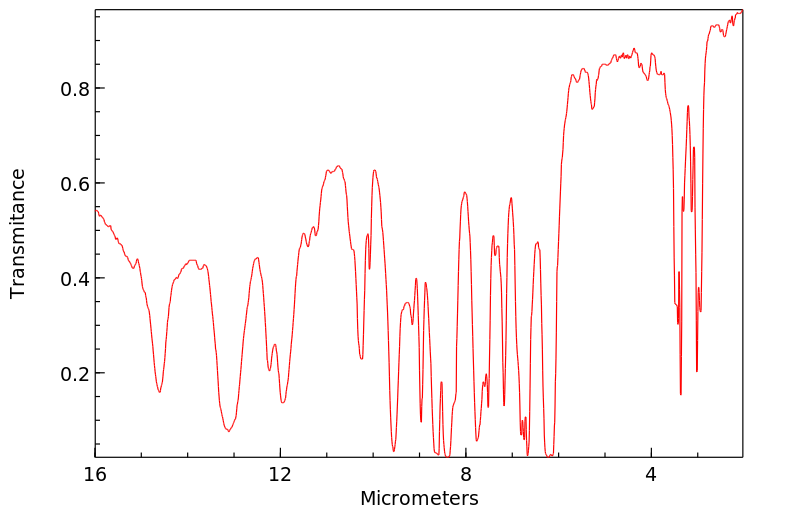| Name: | m-Phenetidine 98% Material Safety Data Sheet |
| Synonym: | 3-Ethoxybenzenamine; 3-Ethoxyaniline; Aniline, 3-ethoxy-; Benzenamine, 3-ethoxy-; m-Ethoxyanilin |
| CAS: | 621-33-0 |
Section 1 - Chemical Product MSDS Name:m-Phenetidine 98% Material Safety Data Sheet
Synonym:3-Ethoxybenzenamine; 3-Ethoxyaniline; Aniline, 3-ethoxy-; Benzenamine, 3-ethoxy-; m-Ethoxyanilin
Section 2 - COMPOSITION, INFORMATION ON INGREDIENTS | CAS# | Chemical Name | content | EINECS# |
| 621-33-0 | m-Phenetidine | 98 | 210-680-2 |
Hazard Symbols: T
Risk Phrases: 23/24/25 33
Section 3 - HAZARDS IDENTIFICATION EMERGENCY OVERVIEW
Toxic by inhalation, in contact with skin and if swallowed. Danger of cumulative effects.Cancer suspect agent.Light sensitive.Air sensitive.
Potential Health Effects
Eye:
May cause eye irritation. May cause chemical conjunctivitis.
Skin:
May cause skin irritation.
Ingestion:
May be harmful if swallowed. May form methemoglobin which in sufficient concentration causes cyanosis (bluish discoloration of skin due to deficient oxygenation of the blood).
Inhalation:
May be harmful if inhaled. Inhalation of aniline causes anoxia due to the formation of methemoglobin.
Chronic:
Effects may be delayed.
Section 4 - FIRST AID MEASURES Eyes: Immediately flush eyes with plenty of water for at least 15 minutes, occasionally lifting the upper and lower eyelids. Get medical aid immediately.
Skin:
Get medical aid. Flush skin with plenty of water for at least 15 minutes while removing contaminated clothing and shoes.
Ingestion:
Never give anything by mouth to an unconscious person. Get medical aid immediately. Do NOT induce vomiting. If conscious and alert, rinse mouth and drink 2-4 cupfuls of milk or water.
Inhalation:
Remove from exposure and move to fresh air immediately. If not breathing, give artificial respiration. If breathing is difficult, give oxygen. Get medical aid.
Notes to Physician:
Section 5 - FIRE FIGHTING MEASURES General Information:
As in any fire, wear a self-contained breathing apparatus in pressure-demand, MSHA/NIOSH (approved or equivalent), and full protective gear. During a fire, irritating and highly toxic gases may be generated by thermal decomposition or combustion.
Extinguishing Media:
In case of fire, use water, dry chemical, chemical foam, or alcohol-resistant foam.
Section 6 - ACCIDENTAL RELEASE MEASURES General Information: Use proper personal protective equipment as indicated in Section 8.
Spills/Leaks:
Absorb spill using an absorbent, non-combustible material such as earth, sand, or vermiculite. Do not use combustible materials such as sawdust. Provide ventilation. Place under an inert atmosphere.
Section 7 - HANDLING and STORAGE Handling:
Wash thoroughly after handling. Use with adequate ventilation. Do not get in eyes, on skin, or on clothing. Do not ingest or inhale.
Store protected from light. Handle under an inert atmosphere. Store protected from air. Do not breathe vapor.
Storage:
Keep containers tightly closed. Do not expose to air. Store protected from light. Store under an inert atmosphere. Store in a cool, dry area away from incompatible substances.
Section 8 - EXPOSURE CONTROLS, PERSONAL PROTECTION Engineering Controls:
Facilities storing or utilizing this material should be equipped with an eyewash facility and a safety shower. Use adequate general or local exhaust ventilation to keep airborne concentrations below the permissible exposure limits.
Exposure Limits CAS# 621-33-0: Personal Protective Equipment Eyes: Wear appropriate protective eyeglasses or chemical safety goggles as described by OSHA's eye and face protection regulations in 29 CFR 1910.133 or European Standard EN166.
Skin:
Wear appropriate protective gloves and clothing to prevent skin exposure.
Clothing:
Wear appropriate protective clothing to prevent skin exposure.
Respirators:
A respiratory protection program that meets OSHA's 29 CFR 1910.134 and ANSI Z88.2 requirements or European Standard EN 149 must be followed whenever workplace conditions warrant respirator use.
Section 9 - PHYSICAL AND CHEMICAL PROPERTIES Physical State: Clear liquid
Color: clear brown
Odor: None reported.
pH: Not available.
Vapor Pressure: Not available.
Viscosity: Not available.
Boiling Point: 248 deg C @ 760.00mmHg
Freezing/Melting Point: Not available.
Autoignition Temperature: Not applicable.
Flash Point: > 112 deg C (> 233.60 deg F)
Explosion Limits, lower: Not available.
Explosion Limits, upper: Not available.
Decomposition Temperature: Not available.
Solubility in water: Not available.
Specific Gravity/Density: 1.0320g/cm3
Molecular Formula: C8H11NO
Molecular Weight: 137.18
Section 10 - STABILITY AND REACTIVITY Chemical Stability:
Stable under normal temperatures and pressures.
Conditions to Avoid:
Incompatible materials, light, exposure to air, excess heat.
Incompatibilities with Other Materials:
Air, acid anhydrides, acid chlorides, acids, chloroformates, direct light, strong oxidizing agents.
Hazardous Decomposition Products:
Nitrogen oxides, carbon monoxide, carbon dioxide.
Hazardous Polymerization: Has not been reported.
Section 11 - TOXICOLOGICAL INFORMATION RTECS#:
CAS# 621-33-0: SI5400000 LD50/LC50:
Not available.
Carcinogenicity:
m-Phenetidine - Not listed by ACGIH, IARC, or NTP.
Other:
See actual entry in RTECS for complete information.
Section 12 - ECOLOGICAL INFORMATION Other No information available.
Section 13 - DISPOSAL CONSIDERATIONS Dispose of in a manner consistent with federal, state, and local regulations.
Section 14 - TRANSPORT INFORMATION IATA
Shipping Name: PHENETIDINES
Hazard Class: 6.1
UN Number: 2311
Packing Group: III
IMO
Shipping Name: PHENETIDINES
Hazard Class: 6.1
UN Number: 2311
Packing Group: III
RID/ADR
Shipping Name: PHENETIDINES
Hazard Class: 6.1
UN Number: 2311
Packing group: III
Section 15 - REGULATORY INFORMATION European/International Regulations
European Labeling in Accordance with EC Directives
Hazard Symbols: T
Risk Phrases:
R 23/24/25 Toxic by inhalation, in contact with skin
and if swallowed.
R 33 Danger of cumulative effects.
Safety Phrases:
S 28A After contact with skin, wash immediately with
plenty of water.
S 36/37 Wear suitable protective clothing and
gloves.
S 45 In case of accident or if you feel unwell, seek
medical advice immediately (show the label where
possible).
WGK (Water Danger/Protection)
CAS# 621-33-0: No information available.
Canada
CAS# 621-33-0 is listed on Canada's NDSL List.
CAS# 621-33-0 is not listed on Canada's Ingredient Disclosure List.
US FEDERAL
TSCA
CAS# 621-33-0 is listed on the TSCA inventory.
SECTION 16 - ADDITIONAL INFORMATION N/A










